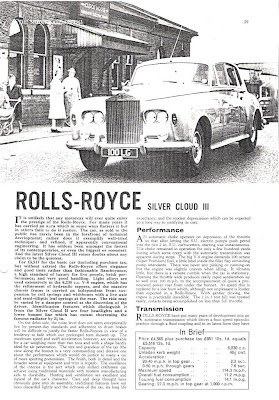
Rolls-Royce sold more cars last year than ever; 3538, a third more than in 2010. The previous best was 3347 in 1978,which makes 2011 the best in 107 years. Great achievement. Scarcely expected in times of hardship. More surprising for cars with the aerodynamics of a house-brick costing between £200,000 and £300,000.
Anybody shopping for a Rolls-Royce should go for a 1998-2002 Silver Seraph. You could probably get a decent one under £50,000. By the 1990s the V8 felt lumpy and the first fruit of the BMW relationship was a V12 as silent as a Rolls-Royce should be. Well proportioned and dignified, the Seraph was the last Crewe Rolls-Royce. Only 1,570 were made.

But where the Seraph was graceful and sleek, the Phantom is big and square, with mean-looking rectangular headlights. The 6.8litre V12 is supremely quiet, immensely powerful, the interior magnificent as ever it was under the old regime at Crewe. Yet old Rolls-Royce made a virtue of understatement and there is nothing understated about the Phantom. It is big, slightly vulgar, with trick features like rear-hinged rear doors emplying electronics to prevent them being opened into the path of oncoming cars. Why would you want rear-hinged doors? They allow Phantom owners to make graceful exits on to red carpets, displaying limbs or whatever else to paparazzis’ flash bulbs.

Chairman and chief executive Ian Roberston shares a rear door with new owner of the 3000th Phantom.
Rolls-Royce thought it smart to have the RR logo on wheel hubs made so it was always upright. They didn’t whirl round when the car was moving and always stopped right way up. I thought them tasteless even though perhaps they suggested Rolls-Royce still had a sense of humour.
Graham Biggs’s sense of humour failed when he read Scotland on Sunday on 28 May 2006. He was Rolls-Royce PRO and got po-faced when I compared them with a flash kids’ fad for big shiny wheel discs. These were aftermarket stick-on accessories that didn’t rotate when the car was moving. They made it look as though the wheels were stopped. Once the car did stop the plates kept spinning so it then looked stationary with the wheels still going round. Most people thought it funny.

Rolls-Royce kept 100LG for the press car. The first one I drove was Silver Cloud III in The Motor road test of August 21, 1963 (above). There was trouble when I almost set the brakes on fire: “both fade tests showed the brakes in a poorish light,” was all I was allowed to write. Rolls-Royce was very sensitive about its brakes. Below is a later 100LG, a Silver Shadow with a young Mrs Dymock at the wheel.


No comments:
Post a Comment